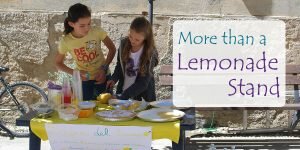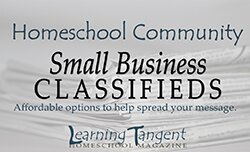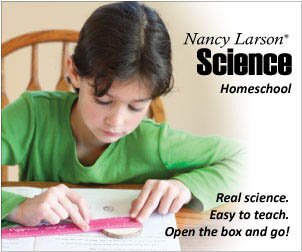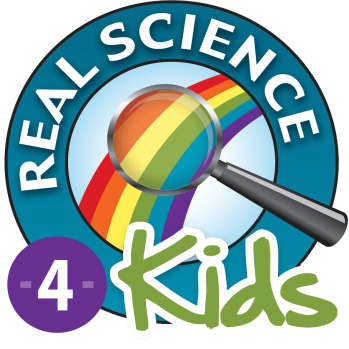
The beauty of homeschooling is the flexibility – the ability to adjust what, when and how you do things to suit the learning styles and personalities of your children. There are a variety of approaches to homeschooling, and most homeschool families use a combination of them. We hope this list helps you understand and decide what direction to take your family.
If you’ve already been down this road, comment at the bottom of the article – others who are new to this would love to hear about your experience!!
School at Home
Often the local school district offers something like this, where they supply the curriculum, educational support and a facilitator who monitors progress. Those who use it like the structure, and that they know what to teach and when. Those new to homeschooling tend to start with this approach because they are familiar with it through their own education in public schools.
Independent homeschoolers can also use this approach by purchasing complete curriculum that includes lesson plans. This can make the School at Home approach very expensive, and unfeasible for those on a tight budget.
This approach works well for kids who crave knowing exactly when and what they are doing, but for many, the rigidity of this approach is simply not worth the comfort of the scheduled structure.
Resources:
- Homeschool Diner
Unschooling
This approach is unscripted, unscheduled, and free flowing. It’s also called interest-led or child-led, and allows the kids to learn about science, math, reading and writing through exploring their world. They follow their curiosity and natural desire to learn about everything. You remember what it was like when your children just started talking – the non-stop questions and constant curiosity. Unschoolers allow this and encourage it, trusting that children will learn what they need to learn.
Many unschoolers develop a passionate curiosity about the world around them, and this curiosity is what drives them to learn even more.
Resources:
- Leaping from the Box – Unschooling
- Wikipedia – Unschooling
Charlotte Mason
According to Ambleside Online:
“Charlotte Mason was a British educator who believed that education was about more than training for a job, passing an exam, or getting into the right college. She said education was an atmosphere, a discipline, and a life; it was about finding out who we were and how we fit into the world of human beings and into the universe God created. But this kind of thinking was pretty much eclipsed during the 20th century by demands for more exams and more workers. In 1987, Susan Schaeffer Macaulay wrote a book called For the Children’s Sake, which reintroduced parents to Charlotte Mason’s methods and philosophy, and it started to gain a foothold with a new generation of homeschoolers.”
Many homeschoolers tend to incorporate some of her ideas into their day, sometimes without even realizing it. Charlotte Mason homeschoolers avoid boring the kids with tons of worksheets, they read lots of books that help the kids connect to the subject. They call these “living books”, which bring the subject to life. The Great Musicians Series of books are a good example of this.
Nature study is strongly encouraged, because they believe that it’s better to pick up a bug to look at it, then it is to just look at a picture describing the body parts. The lesson will be better absorbed when children use all their senses.
Resources:
- Simply Charlotte Mason
- Ambleside Online
- Charlotte Mason Institute
Montessori
“I have studied the child. I have taken what the child has given me and expressed it and that is what is called the Montessori method.” Dr. Maria Montessori.
Those who follow a Montessori path tend to value beauty in the form of simplicity, wooden toys are preferred over plastic, television, computers and other electronics are not encouraged in the younger children. They allow children to progress at their own pace, and encourage what they call “errorless learning”.
According to the Montessori Index,
Montessori is a revolutionary method of observing and supporting the natural development of children. Montessori educational practice helps children develop creativity, problem solving, critical thinking and time-management skills, care of the environment and each other, and prepares them to contribute to society and to become fulfilled persons. The basis of Montessori practice in the classroom is mixed age group (3 – 6 ages in one class), individual choice of research and work, and uninterrupted concentration. Group lessons are seldom found in a Montessori classroom, but learning abounds, and because it is enjoyed, children remember what they learn. As you read through these pages you will discover the unique practices that make Montessori the fastest growing and most successful method of education today.
Resources:
- The International Montessori Index
- Montessori Mom
Relaxed/Eclectic:
The relaxed/eclectic category makes up a very large portion of the homeschooling community. Many families pick and choose from various approaches in order to come up with something that works for their children. They may use a Classical approach to languages, Charlotte Mason for math and science, and a Waldorf approach for still other subjects. Their primary goal is to support their children in the learning approach which works the best for them.
Some of them will use standardized tests, others may not unless their state requires it. The key here is variety, and there is plenty of it. For resources, Eclectic homeschoolers tend to find what they need from a variety of sources.
Classical
This approach has been in use since the middle ages, and produced the majority of our great thinkers. Jefferson, Washington, Adams, they were all educated under this approach. It utilizes the trivium, where students are first asked to absorb a large amount of information through memorization during the grammar stage. Then they move into the Logic stage, where they learn why through logic, these things they have learned are true. During the Rhetoric stage, they gain a greater understand of the world and its working by learning to apply that knowledge.
A pure Classical approach is very rigorous, very demanding and very organized. It will never conform to Common Core standards because of its nature.
Resources:
- A Well-Trained Mind
- Trivium Education




 (We earn a small commission when you purchase using these links)
(We earn a small commission when you purchase using these links) 
I have just signed up to do the school at home option through my states public schools. While I hate common core I am a very unorganized person who has two boys that love structure. Lol I figure this would be the best way for us to wade into homeschooling. There is a more customized private school option available I may consider for next year. The idea of analyzing and deciding curriculum across all subjects overwhelms me at this point. Keep up the good work and thanks for encouraging newcomers.
Totally understand where you’re coming from! That’s the beauty of homeschool- there are so many choices. It’s also what overwhelms people at first, as you’ve found! We actually have more choices for curriculum than the schools do.
I’m happy you like what we are doing here, we truly are here for you! If you ever have any questions, feel free to message me.
I have decided to home school my 4th grader. I am terrified and excited all at the same time. I am concerned about choosing the best curriculum for each subject. Would you advise me to pay for a diagnostic assessment to verify her accurate grade level I each area; or is there something more cost effective to determine the accurate grade level for choosing curriculum?
Sincerely,
T. Silva
Beaumont Tx
Oh I know exactly how you are feeling!
The diagnostics may be easier- but it seems that every company does them a little differently, relating to the curriculum that they work with most closely. Many companies though offer free quiz type things to gauge the level for their stuff. That’s the kind of thing I would look into. Even though they’re set up to work directly with particular curriculum, they’ll tell you where gaps exist. http://Www.shillermath.com had some free math assessments that relate to their books, but they may give an idea on a direction.
English is a little more abstract, but there are many things that can be learned through just reading good books. http://www.englishtag.com/tests/level_test_elementary_A1.asp this may help figure out what needs to be worked on, I don’t know if this one in particular is common core aligned, but it is free and may help.
When we started, we didn’t know anything about that though, and were a bit blind I suppose!
This is what we did: we looked into the various curricula, found one that we liked and discussed the topics that were contained in the description. If there was any question, we figured it was a knowledge gap- and where there is one, there are probably more. We started our work with stuff that we knew to be easier, and when they flew through it, they gained confidence. This, along with explaining that when it starts to get hard, we have found their level, helped ensure we had filled gaps and get comfortable with learning together.
Not very scientific, but it’s worked for us thus far. I hope these ideas help, and let us know if you need anything else.